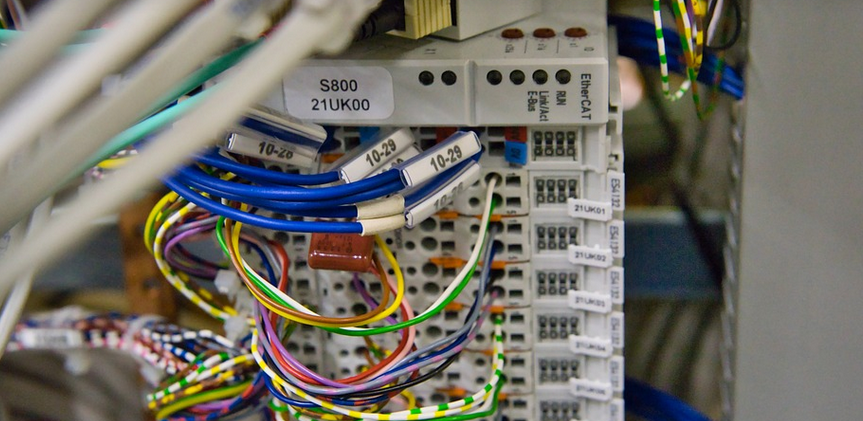A Guide to Making the Most of Your E-Waste
Recycling metal is a crucial part of keeping our planet healthy and reducing our environmental impact. From rusty cans and old appliances to computer parts and discarded bicycles, there’s a world of metal out there just waiting for a second life. And you can play a big role in this by making the most of your local metal recycling drop-off facilities.
Metal recycling centers are popping up everywhere, offering convenience and efficiency to both individuals and businesses. These centers are dedicated to sorting, processing, and transforming discarded metals into valuable resources for new products, construction materials, and even more advanced technologies.
Before you head out to your nearest drop-off facility, let’s dive deeper into what makes metal recycling such a fantastic practice. First, it’s vital to understand the process behind this seemingly simple task – the journey of an item from trash to treasure.
Here’s how it typically works:
1. **Sorting and Separation:** The first step in the metal recycling process is sorting. Metal drop-off centers use a variety of techniques, including magnets, conveyor belts, and specialized machinery, to separate different types of metals.
2. **Preparation and Cleaning:** Once the metal has been separated, it’s cleaned and prepped for processing. This involves removing any debris, rust, or other contaminants that may hinder further processing.
3. **Melting and Processing:** The cleaned and sorted metals are then melted down in high-temperature furnaces to create liquid metal. This process enables the creation of new alloys and other valuable products.
4. **Transformation into New Products:** The resulting liquid metal is transformed into various finished products, including rebar for construction projects, scrap metal for industrial use, and even recycled components for automobiles.
5. **Environmental Protection:** Metal recycling isn’t just about creating new materials—it’s also about protecting our environment. By reducing our reliance on mining fresh metals, we can decrease the environmental impact of extracting raw materials and protect valuable ecosystems.
Why Drop-Off Centers Matter
A Convenient Solution
Drop-off centers provide a convenient solution to those looking to recycle their metal waste in a hassle-free manner. There’s no need for bulky trips to the landfill or long, tedious sorting processes at home.
Simply drive up to the designated drop-off location with your metal waste and follow their clear guidelines for separating and dropping off your recyclable materials.
Drop-off centers often offer a variety of types of metals. These include aluminum, copper, steel, brass, and even lead-acid batteries. Make sure you check the specific drop-off center’s website or contact them directly to find out which metals they accept.
Saving Time and Resources
Drop-off centers not only streamline the recycling process but also save valuable time and resources for both individuals and businesses. This is especially crucial in a modern world where time is scarce, yet waste generation continues to rise at an alarming rate.
By taking advantage of these convenient facilities, you can contribute positively to both your local environment and global sustainability efforts. The convenience factor alone makes them an effective solution for many people who want to make a difference in their own way.
Supporting Sustainable Practices
Beyond the practical benefits, dropping off metal at designated centers also plays a vital role in supporting sustainable practices. It demonstrates your commitment to reducing waste and promoting responsible resource management across a variety of industries.
Businesses that utilize drop-off centers are often seen as environmentally responsible entities. This type of involvement can attract eco-conscious consumers, leading to increased brand credibility and greater market share in the long run.
What to Expect at a Drop-Off Center
The Process – A Step-by-Step Guide
Most metal recycling drop-off centers have clear procedures and guidelines for dropping off your materials. Here’s what you can generally expect:
1. **Check for Accepted Materials:** Look for clear signage about the types of metals that are accepted at the drop-off center. This will help you make sure your metal is eligible for processing.
2. **Separate and Sort Your Metal Items:** Different metals need to be sorted out before they are dropped off. Check for specific instructions or guidelines provided by the center regarding the separation of metals like aluminum, steel, copper, brass, etc.
.
3. **Drop Off at Designated Areas:** Most drop-off centers have designated areas for dropping off different types of metal. Make sure you follow their clear labeling and instructions to ensure your waste is processed correctly.
Preparing Your Metal
To get the most out of your recycling experience, make sure you properly prepare your metal items before drop-off:
1. **Remove any loose debris or attachments:** This will help to avoid contamination during processing.
2. **Separate small metal items:** Large pieces should be broken down into smaller, manageable chunks for easier handling.
3. **Clean your metal items:** While they may appear clean, it’s always a good idea to wipe them down with soapy water before dropping off to remove any dirt or grime.
Getting the Most Out of Your Drop-Off Experience
Remember that drop-off centers offer more than just convenience. They provide an opportunity for you to engage in responsible waste management and support environmental efforts.
Don’t hesitate to reach out to your local center directly if you have any questions or need clarification on their procedures. You can find contact information and online resources on their websites, which often include FAQs, information about accepted materials, and instructions on how to prepare your items for drop-off.
